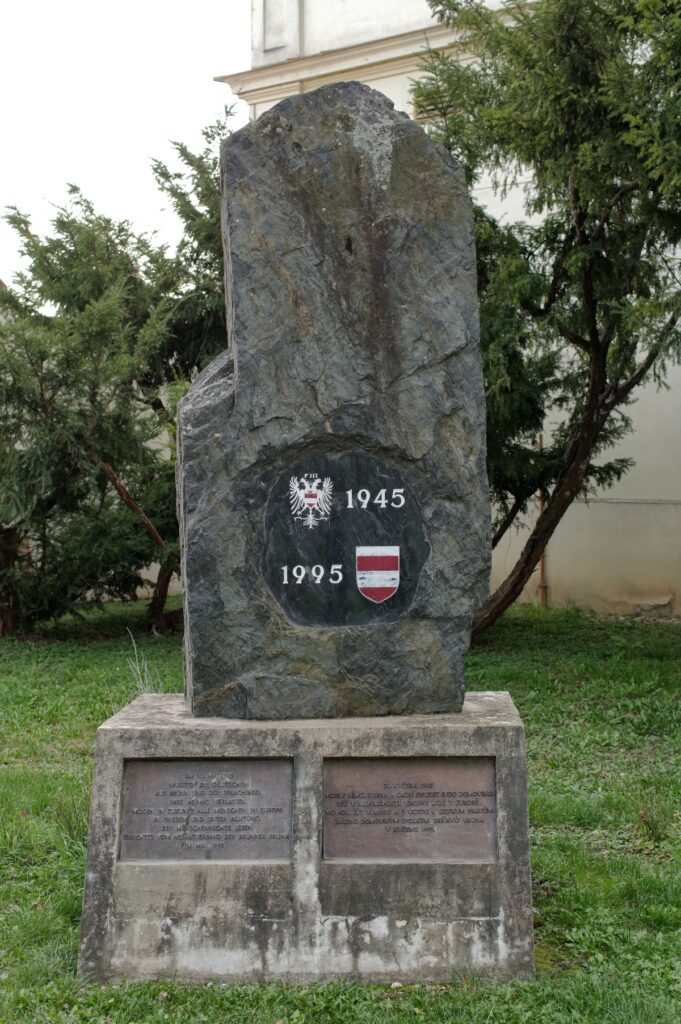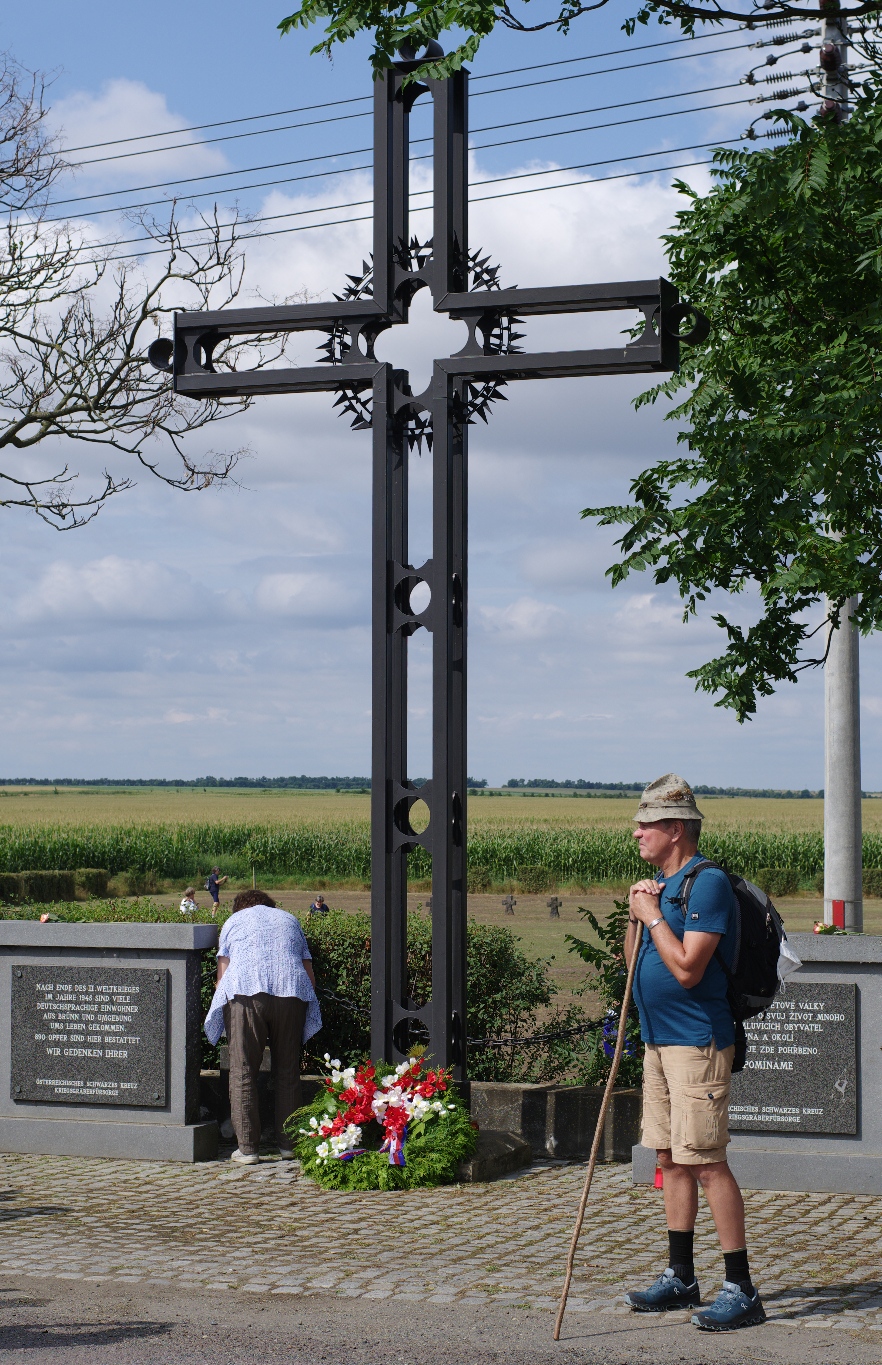The Expulsion of the German Population after World War II – Pohořelice
Fact of the Czech figure „The difficult search for multiethnic coexistence”
Part of the „The emancipation of minorities” topic
The Iron Cross with a crown of thorns in Pohořelice, marking the site of a mass grave for victims of the „Brno Death March,” is one of the most notable memorials to the expulsion of more than three million Germans from Bohemia, Moravia, and Silesia. On May 30 and 31, 1945, following a hastily issued official decree, Germans were expelled from Brno. This involved about 20,000 women, children, and the elderly, who were forced to march south on foot toward Austria. The exact number of casualties from this gruelling march remains unknown. Historians estimate that hundreds to thousands of people perished, succumbing to exhaustion, the harsh treatment by Czech guards, and a dysentery epidemic in the Pohořelice detention camp.
The term traditionally used in Czech for the expulsion and confiscation of German property is „transfer”. The expulsion took place from 1945 to 1947, involving nearly all the German population that had lived in the Czech lands, in some cases for generations. The „wild” phase, which lasted until August 1945, before the Potsdam Conference, was particularly chaotic and violent (besides Brno also in Prague or Ústí and Labem).
The „expulsion” was justified by the claim that the Sudeten Germans were responsible for the disintegration of Czechoslovakia and that they participated in the crimes of Nazism during the occupation. More generally, the expulsion of Germans was also considered a necessary precondition for the existence of an independent Czech and Slovak state. There was a concern that the continued presence of a large German minority, numbering several million, in Czechoslovakia could potentially lead to renewed German aggression in the future.
The expulsion of Germans remains a burning issue in Czech historical reflection. It raises painful moral questions, not only about the inhumane conduct during the „wild” expulsions, but also about the collective guilt applied at the time. The event also left deep scars in Czech-German relations, which only began to heal after 1989 through open public debates and cooperation between Czech and German historians. A significant milestone in reconciliation came in 1997, when the highest political representatives of both countries signed the Czech-German Declaration. In the sake of future cooperation, the declaration condemned the violent excesses committed by both Germans against Czechs and Czechs against Germans during the 20th century.






